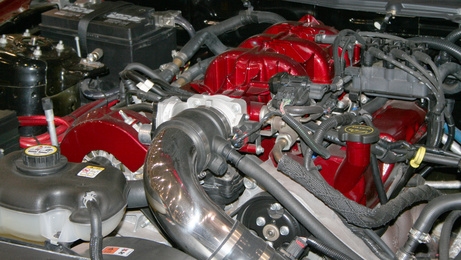
The Positive Crankcase Ventilation (PCV) valve on your vehicle allows gasses that escape from the combustion chamber to be recirculated and burned again instead of being released to the atmosphere. The PCV valve is a one-way valve that is activated by vacuum pressure from the intake manifold. If the PCV valve stops functioning correctly, it can lead to hard starting, erratic idle, and other problems. Checking the PCV can be done in any driveway or garage with only some basic hand tools.
Locate the PCV valve on your engine; it is usually located on the valve cover and has hoses running to it from the air intake and the intake manifold.
Inspect all of the hoses connected to the PCV valve for holes or cracks. Replace any damaged hoses. Remove the PCV valve using open-ended wrenches or an adjustable wrench if necessary.
Blow compressed air through the valve, the air should only be able to pass through in one direction. Replace the valve if it allows air through in both directions or if no air passes through.
Install the new PCV valve with a new gasket, and retest the system. Recheck the PCV and vacuum lines if problems persist.